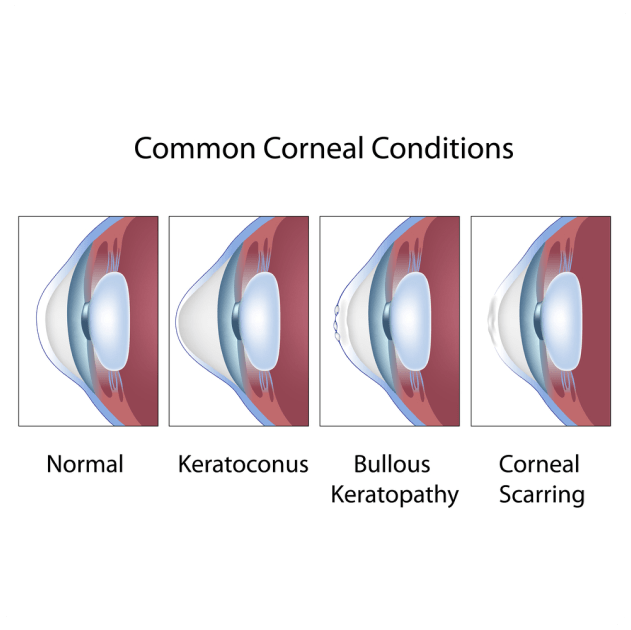
What is Corneal Graft Surgery?
Corneal graft surgery, also known as corneal transplant or keratoplasty, is a procedure to treat corneal disease or damage by replacing it with a healthy cornea from a donor. The cornea is the clear, dome-shaped tissue at the front of the eye that helps protect it and contributes to clear vision.
During the corneal surgery, the damaged cornea is removed and replaced with a cornea from a donor. This cornea transplant surgery can restore vision and improve the quality of life for many patients. After the cornea transplant surgery, most patients experience improved vision and better eye function.
The cornea plays a vital role in maintaining clear vision by blocking harmful particles, dirt, germs, and UV light from entering the eyes. It works together with the lens of the eye to ensure clear and focused vision
Who is the best candidate for corneal graft surgery?
Corneal graft surgery is recommended for those who experience symptoms like eye pain, blurry or cloudy vision, and have certain medical conditions that damage the cornea. Conditions such as Fuchs’s dystrophy, keratoconus, bullous keratopathy, keratitis, and eye infections may require corneal transplant surgery when other treatments are not effective.
Fuchs’s dystrophy is when the inner layer of the cornea’s cells dies, causing the cornea to swell and thicken, leading to blurred vision. Keratoconus changes the cornea’s shape to become cone-shaped, affecting normal vision. Other causes for damaged corneas include infections, traumatic injuries, previous eye surgeries, and bullous keratopathy.
Corneal transplant surgery can help correct issues like corneal scarring, corneal ulcers, keratoconus, thinning, clouding, and swelling of the cornea. If your ophthalmologist determines that a corneal transplant is the best option after exploring other treatments, it can significantly improve or restore your vision when done correctly by experts.

Before the corneal transplant surgery, the surgeon reviews your medical history and addresses any questions you may have, and then administers anesthesia, either local or general, based on your medical condition. Medications are applied to numb the eye, and the cornea transplant surgery takes around 2 hours in an outpatient setting, so you can go home the same day.
While corneal transplant surgery usually improves vision and quality of life, there can be complications like organ rejection, which happens when the body's immune system doesn't accept the donated cornea. To manage this, eye drops are prescribed to reduce the risk of rejection. Other possible complications include infection, increased eye pressure, bleeding, cataract, visual problems, corneal swelling, detachment of the transplant, detached retina, and fluid leakage from the cornea. If you experience loss of vision, eye pain, or sensitivity to light, contact your eye doctor immediately.
After the corneal transplant surgery, it is normal for your eye to be red, sensitive to light, and irritated in the first few days. Your eye will be covered with an eye patch to protect it while sleeping and showering. You will be prescribed medications, eye drops, and ointments to manage pain, swelling, and inflammation, and prevent organ rejection. It's important to avoid activities that can harm your eye until it heals completely. The first follow-up visit will be within 24 hours, and you may need to wear glasses or protective eyewear during the healing period. Avoid rubbing or pressing the eye to prevent damage and promote healing.
After a corneal transplant, it is not safe to drive on the day of the surgery. It's recommended to have someone drive you home and to your follow-up visit. It is generally advised to wait at least a week before driving.

